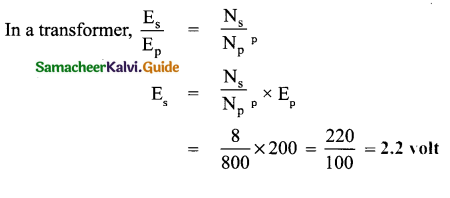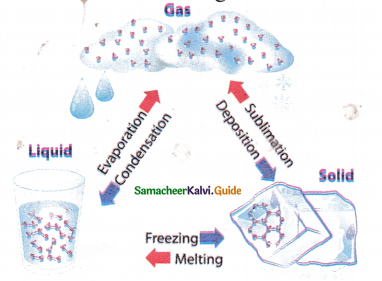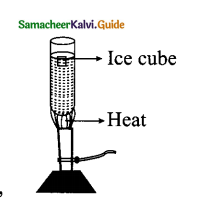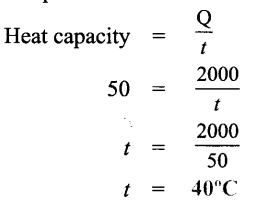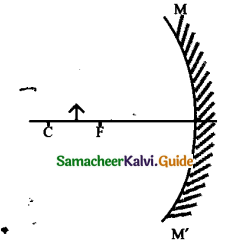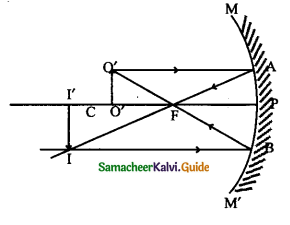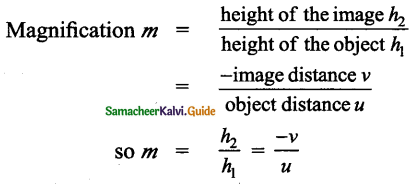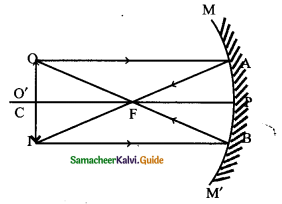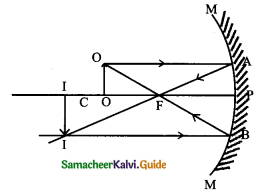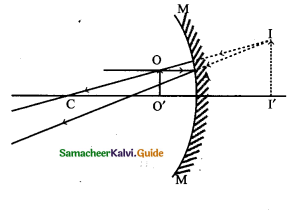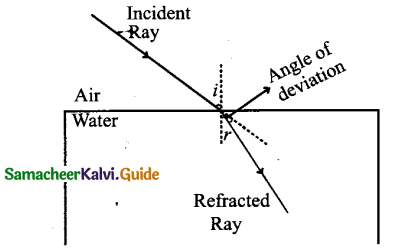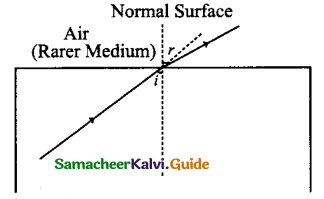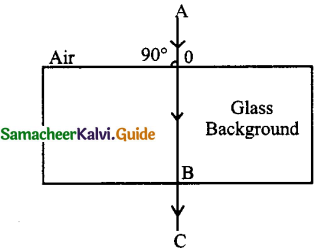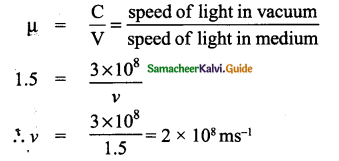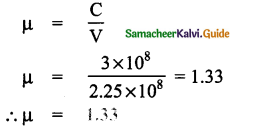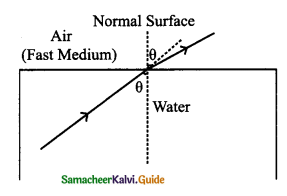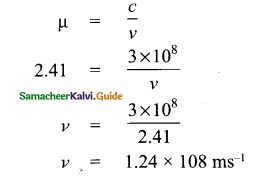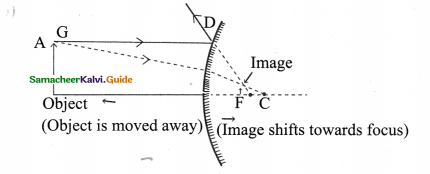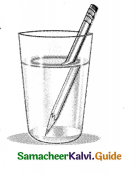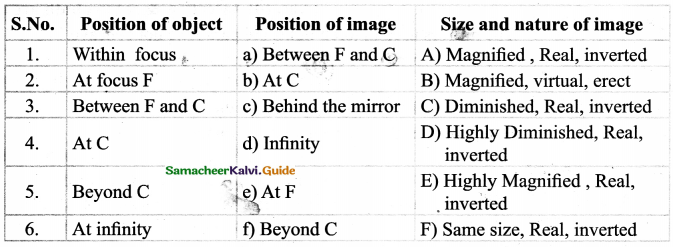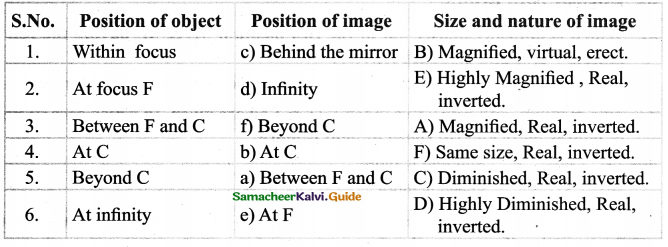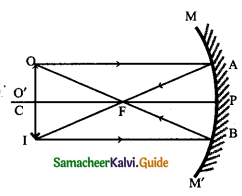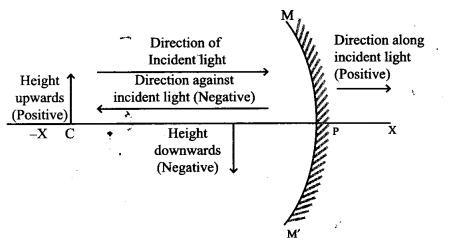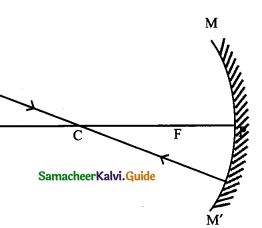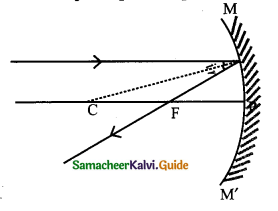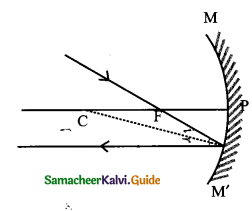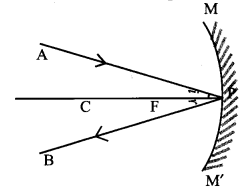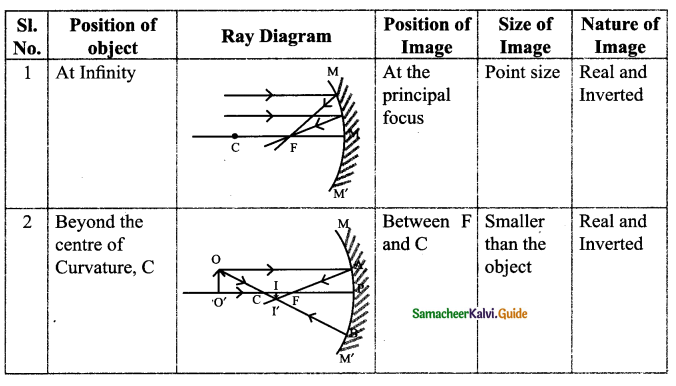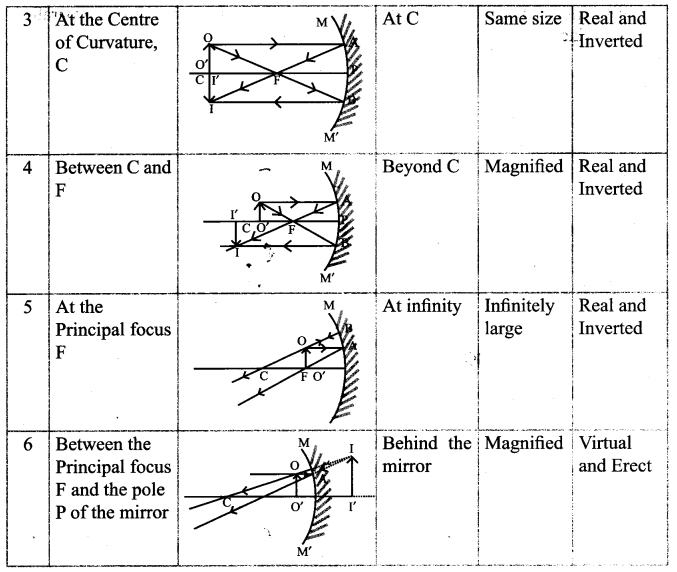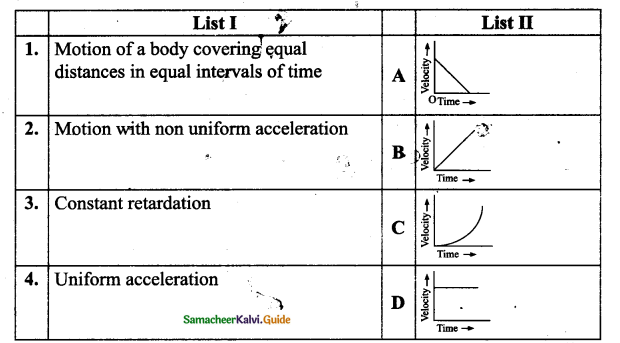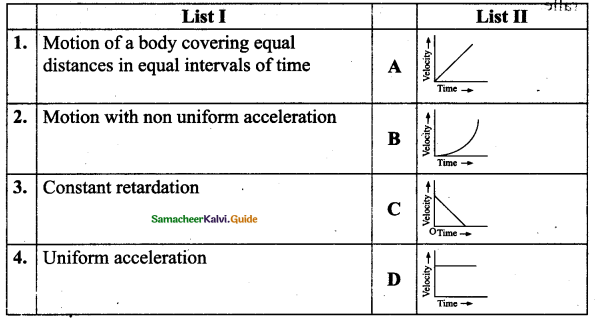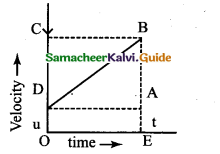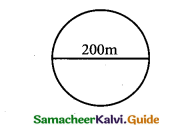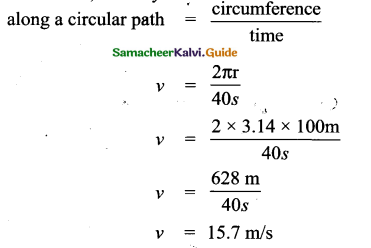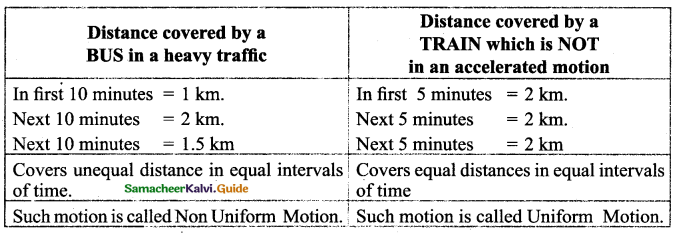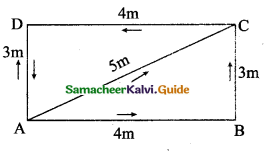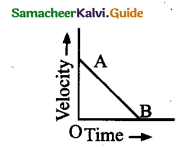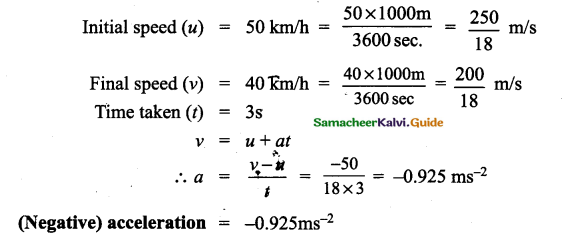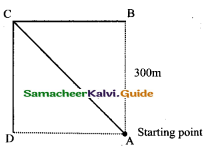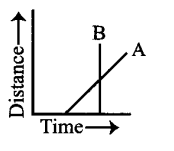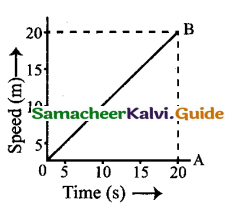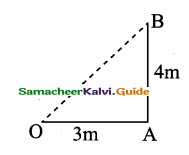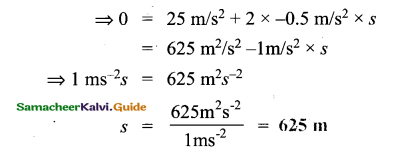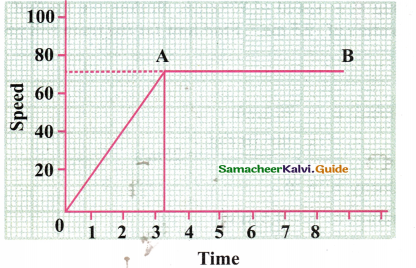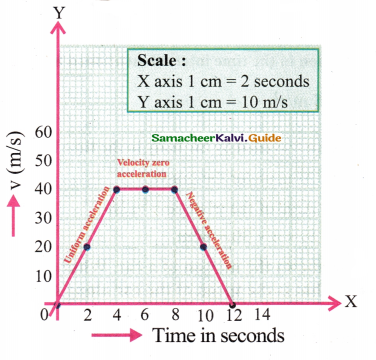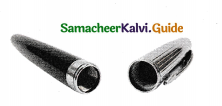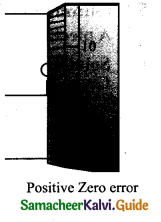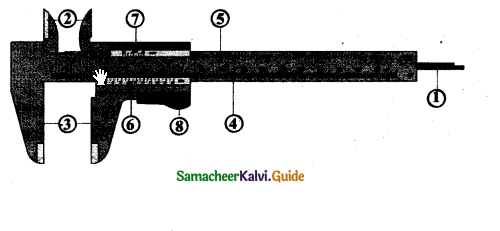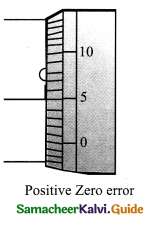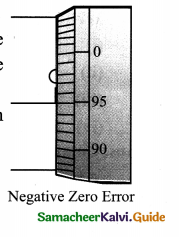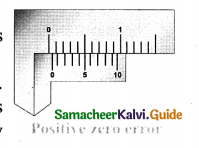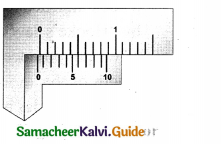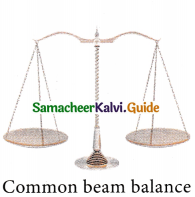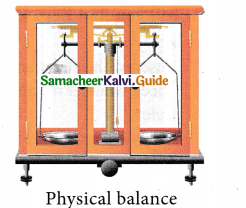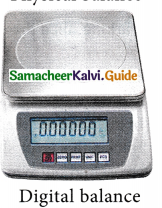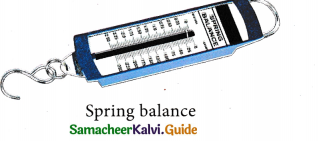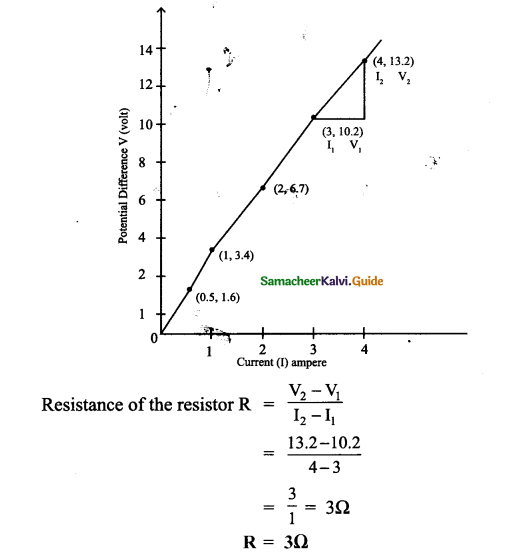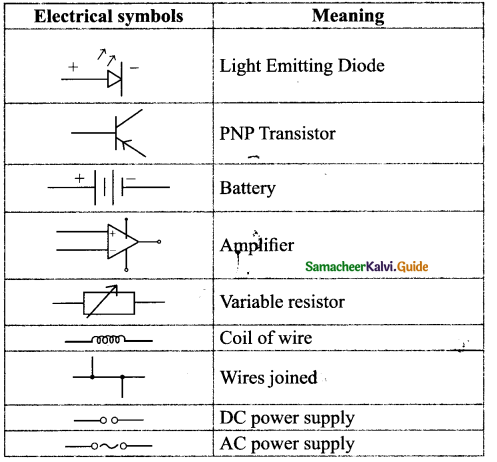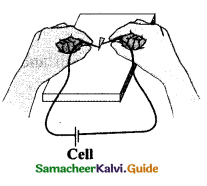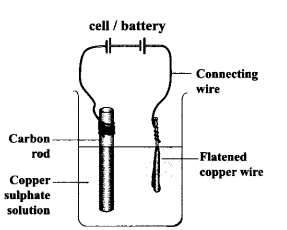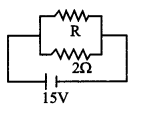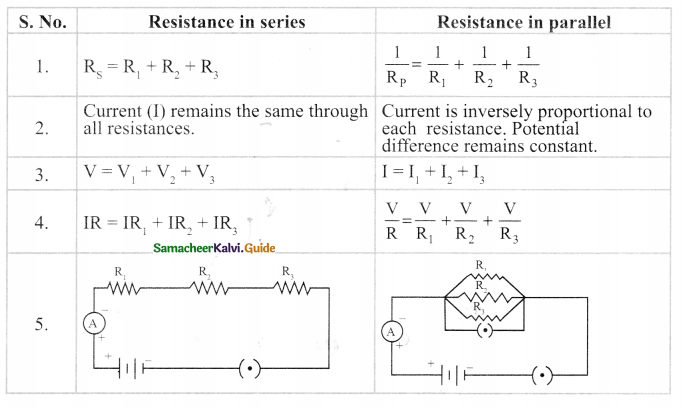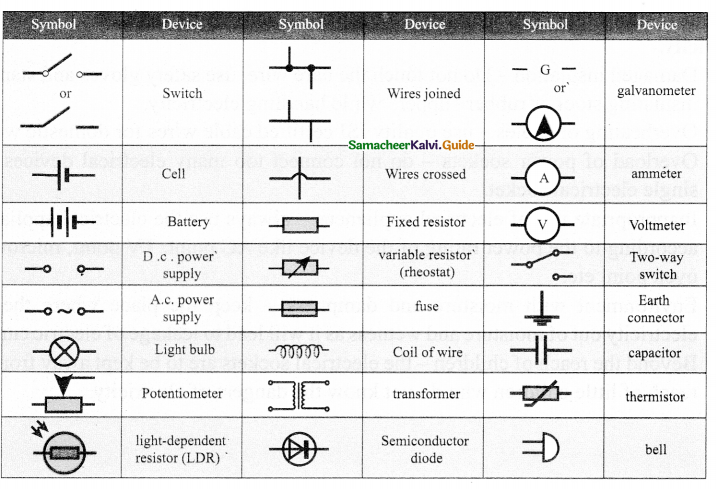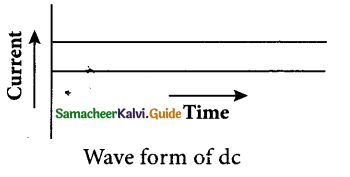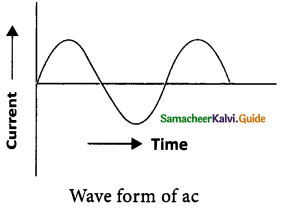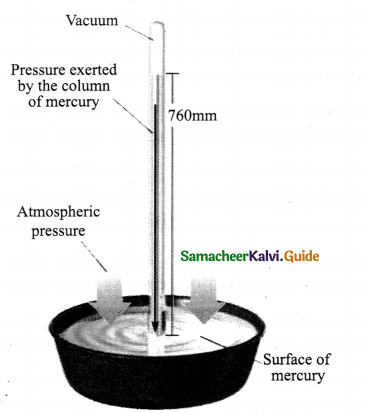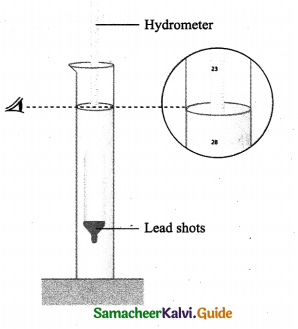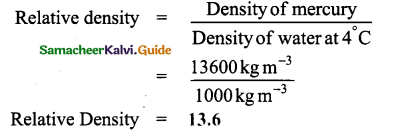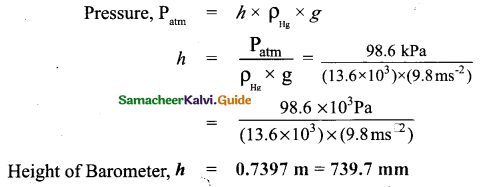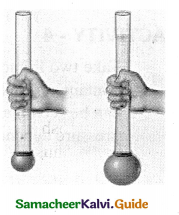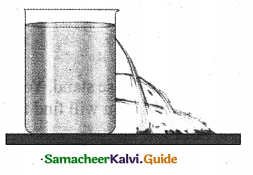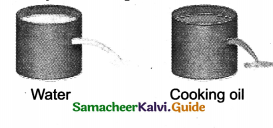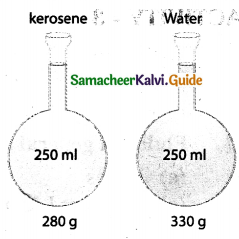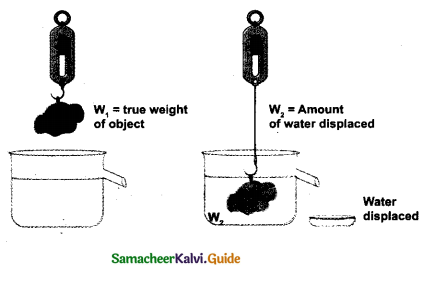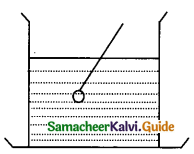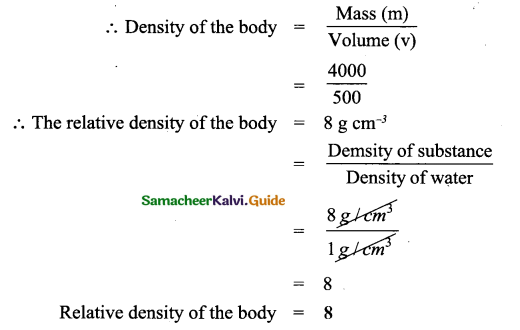Tamilnadu State Board New Syllabus Samacheer Kalvi 9th Science Guide Pdf Chapter 10 Matter Around Us Text Book Back Questions and Answers, Notes.
Tamilnadu Samacheer Kalvi 9th Science Solutions Chapter 10 Matter Around Us
9th Science Guide Matter Around Us Text Book Back Questions and Answers
I. Choose the correct answer:
Question 1.
The separation of denser particles from lighter particles done by rotation at high speed is called ………………
(a) Filtration
(b) sedimentation
(c) decantation
(d) centrifugation
Answer:
(d) centrifugaton
![]()
Question 2.
Among the following ……………… is a mixture.
(a) Common Salt
(b) Juice
(c) Carbon dioxide
(d) Pure Silver
Answer:
(b) Juice
Question 3.
When we mix a drop of ink in water we get a . ………………
(a) Heterogeneous Mixture
(b) Compound
(c) Homogeneous Mixture
(d) Suspension
Answer:
(c) Homogeneous Mixture
Question 4.
……………….is essential to perform separation by solvent extraction method.
(a) Separating funnel
(b) filter paper
(c) centrifuge machine
(d) sieve
Answer:
(a) Separating funnel
![]()
Question 5.
………………… has the same properties throughout the sample.
(a) Pure substance
(b) Mixture
(c) Colloid
(d) Suspension
Answer:
(a) Pure substance
II. State whether true or false. If false, correct the statement.
1. Oil and water are immiscible in each other.
Answer:
True.
2. A compound cannot be broken into simpler substances chemically.
Answer:
False
Correct statement: A compound can be broken into simpler substances chemically.
3. Liquid – liquid colloids are called gels
Answer:
False.
Correct statement: Liquid – solid colloids are called gels.
4. Buttermilk is an example of heterogeneous mixture.
Answer:
True.
![]()
5. Aspirin is composed of 60% Carbon, 4.5% Hydrogen and 35.5% Oxygen by mass. Aspirin is a mixture.
Answer:
False.
Correct statement: It is Compound. It is because the components are combined in a fixed ratio by mass.
III. Match the following :
| A | B |
| Element | Settles down on standing |
| compound | Impure substance |
| Colloid | Made up of molecules |
| Suspension | Pure substance |
| Mixture | Made up of atoms |
Answer:
| A | B |
| Element | Pure substance |
| compound | Made up of atoms |
| Colloid | Made up of molecules |
| Suspension | Settles down on standing |
| Mixture | Impure substance |
IV. Fill in the blanks :
1. A …………………. mixture has no distinguishable boundary between its components.
Answer:
Homogeneous
2. An example of a substance that sublimes is…………
Answer:
Dry ice / Solid CO2 / Camphor
![]()
3. Alcohol can be separated from water by ………….
Answer:
Fractional distillation
4. In petroleum refining, the method of separation used is ………….
Answer:
Fractional distillation
5. Chromatography is based on the principle of………….
Answer:
different solubilities
V. Very Short answer :
Question 1.
Differentiate between absorption and adsorption.
Answer:
Absorption
- Absorption is the process in which the substance is dissolved throughout the bulk of another substance.
- For example a paper (absorbent) soaks up or absorbs water.
Adsorption
- Adsorption is the process in which particles of a substance, (it could be gas, liquid or dissolved solid) adhere to a surface of another substance.
- For example: charcoal adsorbs gases on its surface. Charcoal is called the adsorbent and the gas is called the adsorbate.
![]()
Question 2.
Define Sublimation.
Answer:
Certain solids change directly to a gas without passing through the liquid is called sublimation.
Question 3.
A few drops of ‘DettoP when added to water the mixture turns turbid. Why?
Answer:
The Dettol formulation is a stabilised micro-emulsion. It is manufactured using Chloroxylenol 4.8% and the rest made up by pine oil, isopropanol, castor oil, and soap. On dilution with water, the micro-emulsion destabilises releasing the pine oil and castor oil as a visible bloom. That is why the mixture turns turbid.
![]()
Question 4.
Name the apparatus that you will use to separate the components of mixtures containing two, i. miscible liquids, ii. immiscible liquids.
Answer:
- Miscible liquids – Fractional distillation (Fractionating column and Liebig) Condenser
- Immiscible liquids – Separating funnel
Question 5.
Name the components in each of the following mixtures.
- Ice cream
- Lemonade
- Air
- Soil
Answer:
- Ice cream is a mixture of cream, milk, sugar & sometimes egg.
- Lemonade is a mixture of lemon juice, sugar and water.
- Air is a mixture of nitrogen, oxygen, carbon dioxide, water vapour, and other gases.
- Soil is a mixture of clay, sand and various salts.
![]()
VI. Answer briefly
Question 1.
Which of the following are pure substances?
Ice, Milk, Iron, Hydrochloric acid, Mercury, Brick, and Water.
Answer:
Ice, Iron, Hydrochloric acid, Mercury, and water are pure substances.
Question 2.
Oxygen is very essential for us to live. It forms 21 % of air by volume. Is it an element or a compound?
Answer:
Oxygen is an element.
Question 3.
You have just won a medal made of 22-carat gold. Have you just procured a pure substance or impure substance?
Answer:
I have procured an impure substance. It is made of 22 parts of pure gold and 2 parts of copper or silver.
![]()
Question 4.
How will you separate a mixture containing sawdust, naphthalene and iron filings?
Answer:
The iron filings in the mixture can be separated by Magnetic separation and Naphthalene by sublimation. Sawdust will be remaining at the bottom.
Question 5.
How are homogenous solutions different from a heterogeneous solutions? Explain with examples.
Answer:
Homogeneous mixtures
- Components are uniformly mixed and it will have a single phase,
Eg: Alloys, salt solution, lemonade, petrol etc. - No boundaries of separation between the components. Has a single phase.
- Components are not visible to the naked eye.
- They will be in solid, liquid or in the gaseous phase.
Heterogeneous mixtures
- Components are not uniformly mixed and it will have more than a single phase. They are called suspensions. Eg: chalk in water, petrol in water, sand in water, etc.
- There are visible boundaries between the components. Have two or more distinct phases.
- Components are visible to the naked eye.
- Can be a solid-liquid or solid-gas or liquid-gas or solid-solid, or liquid-liquid mixtures.
![]()
VII. Answer in detail:
Question 1.
Write the differences between elements and compounds and give an example for each.
Elements
- Contains only one kind of atoms.
- It is a pure substance.
- Cannot be broken down further into to simpler substances by chemical methods.
- Has definite physical and chemical properties.
- Eg., Copper (Cu), Silicon (Si), Gold (Ag)
Compounds
- Contains more than one kind of atoms.
- It is not a pure substance.
- Can be broken down further into simpler substances by chemical methods.
- Has definite physical and chemical properties.
- Eg., Water (H20), Carbon dioxide (CO2), Ammonia (NH3)
Question 2.
Explain the Tyndall effect and Brownian movement with a suitable diagram.
Answer:
Brownian Movement:
Brownian movement is a kinetic property. When colloidal solutions are viewed under a powerful microscope,it can be seen that colloidal particles are moving constantly and rapidly in zig-zag directions.
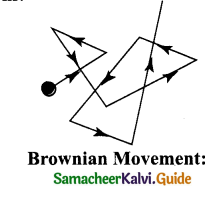
The Brownian movement of particles is due to the unbalanced bombardment of the particles by the molecules of the dispersion medium.
Tyndall effect:
- Tyndall (1869) observed that when a strong beam of light is focused on a colloidal solution, the path of the beam becomes visible.
- This phenomenon is known as Tyndall effect and the illuminated path is called Tyndall cone.
- This phenomenon is not observed in case of true solution.
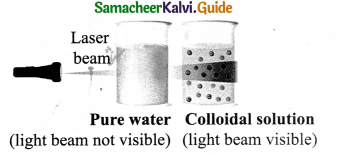
- This phenomenon is due to scattering of light by colloidal particles.
![]()
Question 3.
How is a mixture of common salt, oil, and water separated? You can use a combination
of different methods.
Answer:
- The mixture is taken in a separating funnel., whose mouth is kept closed.
- Oil and water are immiscible liquids.
- As common salt can dissolve in water it settles as a separate layer at the bottom of the oil layer in the separating funnel.
- Place a beaker below the funnel to collect salt solution.
- Open the tap. Allow the salt solution alone to collect in the beaker.
- From the salt solution, common salt is obtained from evaporation.
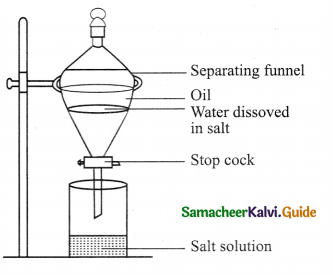
![]()
Intext Activities
ACTIVITY – 1
1. Is air a pure substance or Mixture? Justify
2. You must have seen brass statues in museums and places of worship. Brass is an alloy made up of approx. 30% zinc and 70% copper. Is Brass a pure substance or a mixture or compound?
Answer:
1. Air is a mixture.
Reason: Air contains nitrogen, oxygen, carbon dioxide, dust particles, water vapour. The composition of air is not the same at all places.
2. Brass is a mixture of solid in solid.
ACTIVITY – 3
Take some powdered iron filings and mix them with sulphur.
i. Divide the mixture into two equal halves.
ii. Keep the first half of the mixture as it is, but heat the second half of the mixture.
iii. On heating you will get a black brittle compound.

Solution:
- When Iron fillings and sulphur are mixed both retain their properties it means they have not undergone any chemical reaction.
Iron + Sulphur → dirty yellow powder - When Iron fillings and sulphur are mixed and heated, they undergo a chemical reaction and form Iron sulphide

- The black brittle compound is iron sulphate.
![]()
ACTIVITY – 4
Identify whether the given substance is a mixture or compound and justify your answer.
1. Sand and water, 2.Sand and iron filings, 3.Concrete, 4. Water and oil, 5. Salad, 6. Water 7. Carbon dioxide, 8. Cement, 9. Alcohol.
Solution :
| Substance | Mixture/ compound |
| 1. Sand and water | Mixture – No chemical alteration of two components. |
| 2. Sand and iron filings | Mixture – Sand (silicon and oxygen) is a compound, but sand with iron filings form a mixture. |
| 3. Concrete | Mixture – Concrete is a mixture of lime, cement, water, sand, and other rocks. |
| 4. Water and oil | Mixture – Water is a compound, but when water is mixed with oil, it forms a heterogeneous mixture. |
| 5. Salad | Mixture – salad consists of two or more substances mixed together without any chemical bond. |
| 6. Water | Compound – (2-H and 1-O) Both combining elements are mixed chemically. |
| 7. Carbon dioxide | Compound – (1-C and 2-O) Both combining elements are mixed chemically. |
| 8. Cement | Mixture – Cement is a mixture of many compounds. |
| 9. Alcohol | Compound – It is an organic compound in which one the hydroxyl group is bound to a saturated/unsaturated carbon atom. |
ACTIVITY – 5
1. Take bottles containing sugar, starch, and wheat flour.
2. Add one teaspoon full of each one to a glass of water and stir well. Leave it aside for about ten minutes.
What do you observe?
Answer:
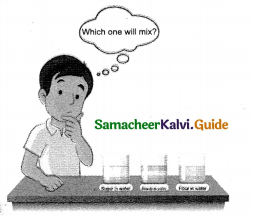
When one teaspoon full of sugar, starch and wheat flour are added to a glass of water, sugar dissolves in water but wheat flour does not. If we leave it aside for about 10 minutes, wheat flour settles at the bottom
![]()
Test Yourself :
Question 1.
Why whole milk is white?
Answer:
Milk is white because it reflects all wavelengths of visible light. The mixture of reflected colors produces white light. The reason for this is due to the chemical composition of milk and the size of the particles contained within it.
Question 2.
Why the ocean is blue?
Answer:
The ocean looks blue because red, orange, and yellow (long-wavelength light) are absorbed more strongly by water than is blue (short-wavelength light). So when white light from the sun enters the ocean, it is mostly the blue that gets returned. Same reason the sky is blue.
Question 3.
Why the sun looks yellow when it is really not?
Answer:
Our sun is actually white (a mixture of all wavelength of visible spectrum) if we see it from outer space or high-altitude airplanes. Our atmosphere scatters shorter to bigger wavelengths color from sunlight when the white light travels through it. During day, it scatters violet and blue colours leaving yellowish sunlight (the reason why sky is blue and sunlight is yellow). During morning and evening, the sun appears reddish because light rays needs to travel longer distance in atmosphere which causes scattering of yellow light too.
9th Science Guide Matter Around Us Additional Important Questions and Answers
I. Choose the correct answer :
Question 1.
Liquids have
(a) definite volume, definite shape and are not compressible.
(b) definite volume, no definite shape and are highly compressible.
(c) no definite volume, no definite shape, and slightly compressible
Answer:
(b) definite volume, no definite shape, and slightly compressible
Question 2.
Intermolecular space is maximum in
(a) solids
(b) liquids
(c) gases
(d) all the above
Answer:
(c) gases
![]()
Question 3.
Air is a/an,
(a) compound
(b) element
(c) Mixture
(d) Molecule
Answer:
(c) Mixture
Question 4.
Which statement is not correct for a mixture
(a) Components retain their properties
(b) Properties of a mixture are different from its components
(c) Components are mixed in any ratio
(d) Components are separated using simple methods
Answer:
(b) Properties of a mixture are different from its components
Question 5.
A homogeneous mixture of two or more substances is called
(a) True solution
(b) Suspension
(c) Colloidal solution
(d) None of the above.
Answer:
(a) True solution
![]()
Question 6.
A colloidal solution is a
(a) Homogeneous mixture
(b) Heterogeneous mixture in which dissolved particles cannot be seen with naked eyes
(c) Heterogeneous mixture in which dissolved particles can be seen with naked eyes
(d) All the above
Answer:
(b) Heterogeneous mixture in which dissolved particles cannot be seen with naked eyes
Question 7.
Muddy water is an example of
(a) True solution
(b) Suspension
(c) Colloidal solution
(d) No solution
Answer:
(b) Suspension
![]()
Question 8.
The solution of soap in water is
(a) True solution
(b) Suspension
(c) Colloidal solution
(d) No solution
Answer:
(c) Colloidal solution
Question 9.
Water is a/an
(a) element
(b) Mixture
(c) Molecule
(d) compound
Answer:
(d) compound
![]()
Question 10.
When two or more elements combine together they form
(a) element
(b) compound
(c) Mixture
(d) Molecule
Answer:
(b) compound
Question 11.
Which of the following will show the “Tyndall Effect”?
(a) Salt solution
(b) Milk & starch solution
(c) Copper sulphate solution
(d) Sugar solution
Answer:
(b) Milk & starch solution
![]()
Question 12.
Solid is an arrangement of particles
(a) close together
(b) far together
(c) far apart
(d) none of these
Answer:
(a) close together
Question 13.
The movement of particles in liquids is …………………..
(a) Vibrate on the spot
(b) around each other
(c) Move quicks in all direction
(d) none of these
Answer:
(b) around each other
Question 14.
Gases change to liquid by the process of . …………………..
(a) Melting
(b) Vapourising
(c) Condensing
(d) Freezing
Answer:
(c) Condensing
![]()
Question 15.
The physical state of water at 373 K is …………………..
(a) solid
(b) liquid
(c) vapour
(d) plasma
Answer:
(c) vapour
Question 16.
The constituents that form a mixture are also called …………………..
(a) Elements
(b) Compounds
(c) Alloys
(d) Components
Answer:
(d) Components
II. True or False? If false, correct the statement:
1. Atoms are the tiny particles which repel each other when they are squeezed very close.
Answer:
True
2. A teabag placed in a cup of hot water will diffuse into the water.
Answer:
True
![]()
3. Evaporation does form bubbles.
Answer:
False
Correct statement: No does not, only boiling forms bubbles.
4. The energy for the process of sublimation can be derived either from the surroundings or from the heat supplied.
Answer:
True
5. The pressure of gases does not depend on the temperature of the gas and the volume it occupies
Answer:
False
Correct statement: The pressure of gases does depend on the temperature of the gas and the volume it occupies
![]()
6. Higher the temperature, higher the kinetic energy of particles.
Answer:
True
7. Solids do not flow.
Answer:
True
8. Gases do not diffuse very easily.
Answer:
False.
Correct statement: Gases diffuse very easily.
9. Mixtures are impure substances.
Answer:
True.
![]()
10. Salt solution is an example of a heterogeneous mixture.
Answer:
False.
Correct statement: The salt solution is an example of a homogeneous mixture.
III. Match the following :
1. (i)
| Column A | Column B |
| 1. Metal | (a) can be compressed easily |
| 2. Metalloid | (b) have the least density |
| 3.Heating curve | (c) Copper, Mercury, Gold, Chromium |
| 4. Gases | (d) Boron, Germanium, Silicon, Arsenic |
| 5. Liquids | (e) a plot of temperature versus time |
Answer:
1) – c, 2) – d, 3) – e, 4) – a, 5) – b
(ii)
| Column A | Column B |
| 1. Colloidal solution | (a) Carbon, Oxygen, Chlorine, Neon |
| 2. Homogeneous | (b) C12H22O11 |
| 3. Cane sugar | (c) dispersed phase, dispersed medium |
| 4. Non-Metals | (d) Oil shaken in the water |
| 5. Suspensions | (e) True solutions |
Answer:
1) – c, 2) – e, 3) – b, 4) – a, 5) – d
![]()
2. Match the following.
| Dispersed phase & Medium | Examples |
| 1. Solid solid | (a) gel |
| 2. Liquid solid | (b) emulsion |
| 3. Liquid-liquid | (c) solid foam |
| 4. Gas solid | (d)alloys |
Answer:
1 – d, 2 – a, 3 – b, 4 – c.
3. Match the following.
| Dispersed phase & Medium | Examples |
| 1. Solid-liquid | (a) Aerosol |
| 2. Solid gas | (b) Foam |
| 3. Liquid gas | (c) Sol |
| 4. Gas-liquid | (d) Aerosol |
Answer:
1 – c, 2 – a, 3 – d, 4 – b.
IV. Fill in the blanks :
1. A substance must absorb …………….. so that it can melt.
Answer:
heat energy
2. Boiling refers to the process by which a substance changes from the liquid to the gaseous state at its …………. point.
Answer:
boiling
![]()
3. ………………… is used for industrial refrigeration and transporting frozen food.
Answer:
Dry ice
4. ……………….. is the SI unit of temperature
Answer:
Kelvin
![]()
5. Elements contain the …………………of the same kind
Answer:
atoms
6. When elements are physically mixed they form…………………
Answer:
mixtures
7. A compound has a definite …………………
Answer:
formula
![]()
8. Mixture of iron filings and salt is a …………………type of mixtures.
Answer:
heterogeneous
9. …………………is the major difference between true solutions, suspensions and colloids.
Answer:
Particle size
10. Phenomenon of Evaporation takes place at the …………………of a liquid.
Answer:
Surface
11. Inverse of sublimation is called …………………
Answer:
deposition
![]()
12. Expand LPG …………………
Answer:
Liquefied Petroleum Gas
13. LPG is ………………… gas.
Answer:
inflammable hydrocarbon
14. Compressibility of solids: …………………..
Answer:
can’t be compressed
15. Fluidity of solids: …………….
Answer:
do not flow
![]()
16. A mixture does not have fixed …………………….
Answer:
boiling point (or) melting point
17. A compound has a fixed ………………….
Answer:
boiling point (or) melting point
18. The mixture of Iron filling and sale is …………………
Answer:
heterogeneous
19. Gas-solid is ……………………
Answer:
Solid foam
20. Examples of foam is ……………
Answer:
Soap lather / Aerated water
![]()
21. Evaporation is always accompanied by…………..in temperature.
Answer:
decrease / cooling effect
V. Very short answer:
Question 1.
Define ‘matter’.
Answer:
The matter is anything that has mass & occupies space.
Question 2.
What are the three states of matter?
Answer:
Solids, liquids, and gases are the three states of matter.
![]()
Question 3.
What is an atom?
Answer:
The smallest unit of an element which may or may not have an independent existence but always take part in a chemical reaction is called an atom.
Question 4.
What is a molecule?
Answer:
The smallest unit of a pure substance which always exist independently and can retain physical and chemical properties of that substance is called a molecule.
![]()
Question 5.
Give an example for a molecule.
Answer:
Hydrogen molecule – consists of 2 atoms of hydrogens.
Question 6.
How is matter classified?
Answer:
Matter is classified as pure and impure substances.
Question 7.
How are pure substances classified?
Answer:
Pure substances are classified as elements and compounds.
Question 8.
Give examples of pure substances.
Answer:
Copper, oxygen, hydrogen.
![]()
Question 9.
How are impure substances classified?
Answer:
Impure substances are classified as homogeneous and heterogeneous.
Question 10.
How are elements classified?
Answer:
Elements are classified as metals, non-metals, and metalloids.
Question 11.
Give examples for metalloids.
Answer:
Boron, silicon, germanium, and arsenic.
Question 12.
Give the chemical formula for cane sugar.
Answer:
C12H22O11
Question 13.
Expand LPG.
Answer:
Liquefied petroleum gas.
![]()
Question 14.
Name the element which is used in toothpaste to strengthen our teeth.
Answer:
Fluorine.
Question 15.
Name the compounds used in fertilizers.
Answer:
Compounds of phosphorus, nitrogen, and potassium are used in fertilizers.
Question 16.
Is blood a pure substance?
Answer:
No blood is not a pure substance. It is a mixture of components such as platelets, red and white blood corpuscles, and plasma.
![]()
Question 17.
Name the two types of mixtures.
Answer:
Homogeneous and heterogeneous.
Question 18.
Name some substances that sublime.
Answer:
Camphor, Naphthalene, Mothballs.
Question 19.
Name a suitable method used to separate two immiscible liquids.
Answer:
Separating funnel.
Question 20.
Name a method used to separate two miscible liquids.
Answer:
Fractional distillation.
![]()
Question 21.
Name the machine used in the centrifugation process.
Answer:
Centrifuge.
Question 22.
Give an example for liquid in gas.
Answer:
Aerosol.
Question 23.
What is “Brownian motion”?
Answer:
The erratic random movement of microscopic particles in a fluid, as a result of ‘ continuous bombardment from molecules of the surrounding medium was discovered by the scientist Robert Brown and so the movement is called “Brownian motion”
![]()
VI. Short answer :
Question 1.
What is an element? ’
Answer:
Each element is made up of only one kind of atom. Element is the building block of all materials. The element of any substance cannot be broken down further into simple substances.
Question 2.
What is a compound?
Answer:
When 2 or more elements combine chemically to form a new substance, the new ‘ substance is called a compound.
Example: H2O.
![]()
Question 3.
What is a mixture?
Answer:
A mixture is an impure substance which contains 2 or more kinds of elements or ‘ compounds or both physically mixed together in any ratio.
Question 4.
What is LPG?
Answer:
LPG is liquefied petroleum gas. It contains a mixture of butane and propane gas.
Question 5.
Distinguish an element and a compound.
Answer:
Element:
- Made up of only one kind of atom.
- The smallest particle that retains all its properties in the atom cannot be broken down into simpler substances.
Compound:
- Made up of more than one kind of atom.
- The smallest particle that retains all the properties in the molecule can be broken down into elements by chemical methods.
![]()
Question 6.
Define sublimation.
Answer:
Certain solid substances when heated change directly from solid to gaseous state without attaining liquid state. The vapours when cooled give back the solid substance. This process is known as sublimation.
Question 7.
What is centrifugation?
Answer:
Centrifugation is the process by which fine insoluble solids from a solid liquid mixture can be separated in a machine called a centrifuge.
Question 8.
What is solvent extraction?
Answer:
Solvent extraction method is used to separate two immiscible liquids. This method works on the principle of difference in solubility of two immiscible liquids in a suitable solvent.
![]()
Question 9.
What is distillation?
Answer:
Distillation is the process of obtaining pure liquid from a solution. It is actually a combination of evaporation and condensation.
Question 10.
What is fractional distillation?
Answer:
Fractional distillation is used to separate two or more miscible liquids that do not differ much in their boiling points, (less than 25K).
Question 11.
What is chromatography?
Answer:
Chromatography is a separation technique. It is used to separate different components of a mixture based on their different solubilities in the same solvent.
![]()
Question 12.
What is paper chromatography?
Answer:
Paper chromatography is used .to separate the different coloured dyes in a sample. It is based on the principle of different solubility in the solvent which is absorbed to different extents by the chromatography paper.
Question 13.
What is a solution?
Answer:
A solution is a homogeneous mixture of two or more substances.
Question 14.
What is a solute?
Answer:
In a solution, the component present in a lesser amount by weight is solute.
Question 15.
What is the solvent?
Answer:
In a solution, the component present in a larger amount by weight is solvent.
![]()
Question 16.
What are Colloidal Solutions?
Answer:
A colloidal solution is a heterogeneous system consisting of the dispersed phase and the
dispersion medium.
Dispersed phase
- Component present in smaller proportion
- Analogous to solute of a true solution
Dispersion medium
- Component present in larger proportion
- Analogous to solvent of a true solution
Question 17.
What is Tyndall effect?
Answer:
Tyndall (1869) observed that when a strong beam of light is focused on a colloidal solution the path of the beam becomes visible. This phenomenon is known as Tyndall effect and the illuminated path is called Tyndall cone. This phenomenon is not observed in case of true solution.
![]()
Question 18.
What are the Types of emulsions?
Answer:
The two liquids mixed can form different types of emulsions. For example, oil and water can form an oil in water emulsion, where the oil droplets are dispersed in water, or they can form a water in oil emulsion, with water dispersed in oil.
Question 19.
What are the uses of emulsions?
Answer:
Emulsions find wide applications in food processing, pharmaceuticals, metallurgy, and many other important industries.
![]()
VII. Answer in detail :
Question 1.
What are the characteristics of Pure Substances? (or) List out the characteristics of Pure Substances.
Answer:
- Made up of only one kind of atom or molecule.
- The ratio of the components of a pure substance is fixed.
- Have a characteristic set of properties. Physical properties like boiling point, melting point, density etc. are
- fixed. Such properties will vary with the proportions of constituents present in the mixture.
- Has the same composition throughout i.e it is homogenous in nature
Question 2.
List out the characteristics of Mixtures.
Answer:
- The constituents of a mixture are loosely held together without any chemical force between the constituents and in such a case the constituents retain their individual properties.
- A mixture can be prepared by mixing the constituents in any proportion i.e mixtures do not have any fixed amount of constituents Formation of mixtures does not involve any exchange of energy.
- Mixtures do not have any characteristic set of properties. Physical properties of mixtures like boiling point, melting point, etc. are not fixed. Such properties will vary with the proportions of constituents present in the mixture.
- Components of a mixture can be separated by physical methods.
![]()
Question 3.
Tabulate Differences between mixtures and compounds.
Answer:
Mixtures
- A mixture can be separated into its constituents by physical processes like filtration, evaporation, sublimation, magnet distillation, solvent extraction.
- A mixture retains or shows the properties of its constituents
- Energy (in the form of heat light etc.) is neither given out nor absorbed in the preparation of a mixture
- The composition or proportion is variable a mixture does not have a definite formula
- A mixture does not have a fixed boiling point or melting point
Compounds :
- A compound cannot be separated into its constituents by physical processes but can be only separated by a chemical process
- The properties of a compound are entirely different from those of its constituent elements
- Energy (in the forth of heat, light etc.) is given out or absorbed during the preparation of a compound
- The composition of a compound is fixed. The constituents are present in a fixed ratio by mass. The compound has a definite formula.
- A compound has a fixed boiling point or melting point
Question 4.
Write the Classification of colloids based on physical state of dispersed phase and dispersion medium.
Answer:
Dispersed phase or the dispersion medium can be a solid, or liquid or gas. There are eight different combinations possible (The combination in which both the dispersed phase and dispersion medium are gases does not exist as gases are completely miscible and can never give rise to a colloidal solution).
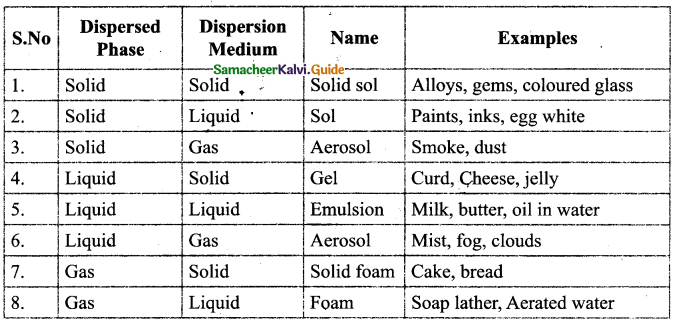
![]()
Question 5.
Two immiscible liquids are taken in the above funnel for separation.
Which is denser, X or Y? Suggest any one example for X and one for Y. A third liquid Z which is soluble only in Y is added to the mixture and contents in the funnel are shaken well. How many layers will you observe now? How will you separate the three liquids? Boiling point of X is 98°C, that of Y is 43°C and that of Z is 75°C.
Answer:
Boiling point of the 3 liquids are given as
X is 98°C – Which corresponds to water.
Y is 43°C – Which corresponds to oil.
Z is 75°C – Which corresponds to alcohol.
‘Y’ is more denser.
Only two layers are observed. X is separated by separating funnel, Z is separated by distillation method. Y – is in the distillation flask.

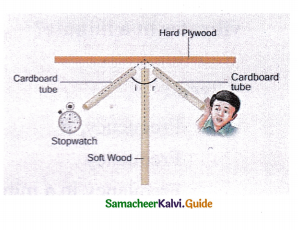
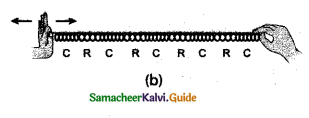


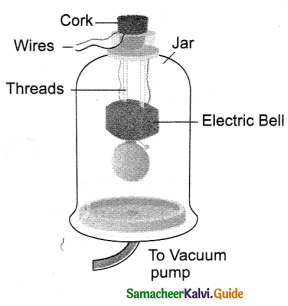
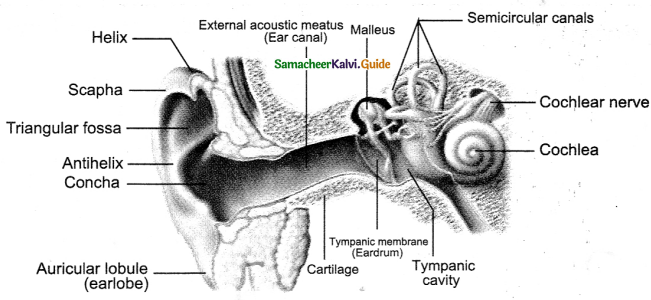
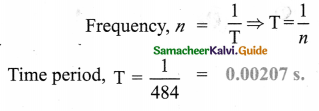
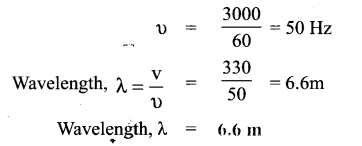

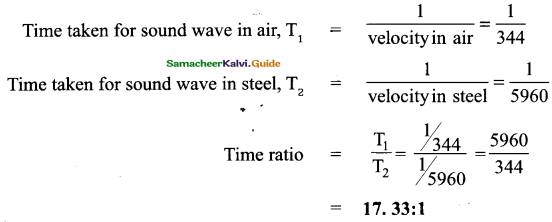

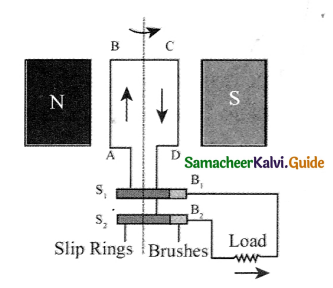
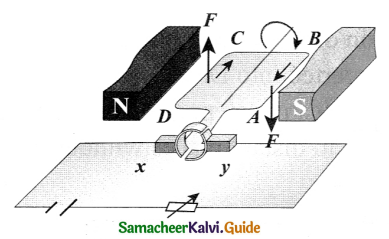
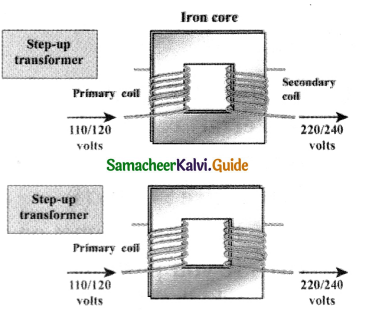
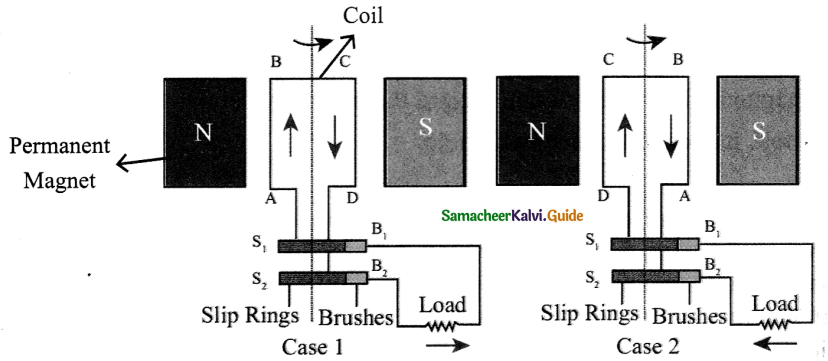
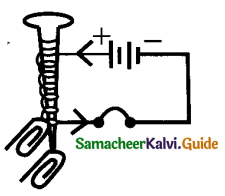
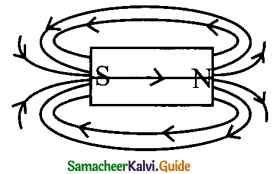
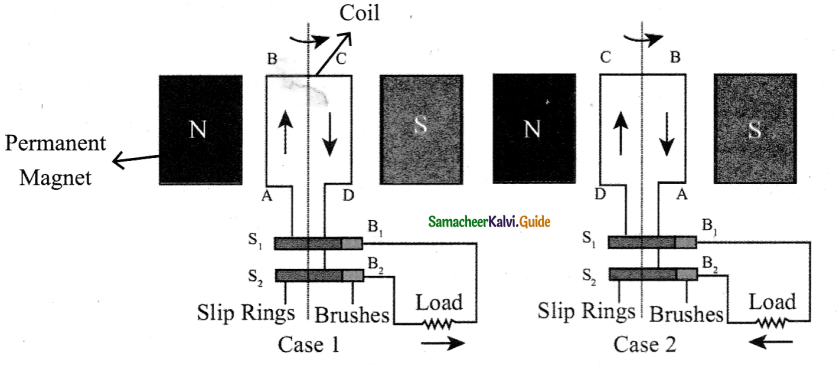 When the coil is rotated, the magnetic flux linked with the coil changes. This change in magnetic flux will lead to generation of induced current.
When the coil is rotated, the magnetic flux linked with the coil changes. This change in magnetic flux will lead to generation of induced current.